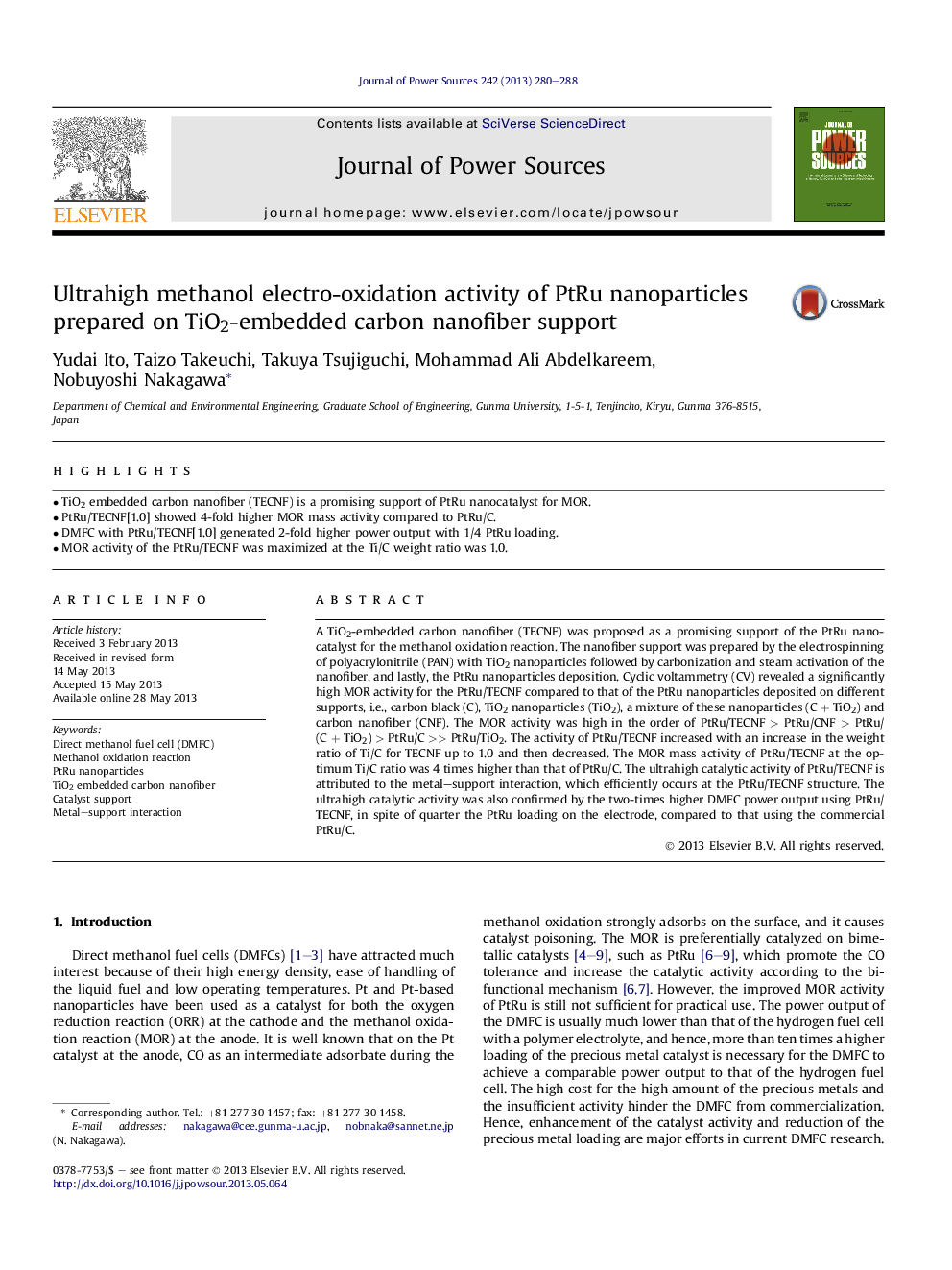| Article ID | Journal | Published Year | Pages | File Type |
|---|---|---|---|---|
| 7739510 | Journal of Power Sources | 2013 | 9 Pages |
Abstract
A TiO2-embedded carbon nanofiber (TECNF) was proposed as a promising support of the PtRu nanocatalyst for the methanol oxidation reaction. The nanofiber support was prepared by the electrospinning of polyacrylonitrile (PAN) with TiO2 nanoparticles followed by carbonization and steam activation of the nanofiber, and lastly, the PtRu nanoparticles deposition. Cyclic voltammetry (CV) revealed a significantly high MOR activity for the PtRu/TECNF compared to that of the PtRu nanoparticles deposited on different supports, i.e., carbon black (C), TiO2 nanoparticles (TiO2), a mixture of these nanoparticles (CÂ +Â TiO2) and carbon nanofiber (CNF). The MOR activity was high in the order of PtRu/TECNFÂ >Â PtRu/CNFÂ >Â PtRu/(CÂ +Â TiO2)Â >Â PtRu/CÂ >>Â PtRu/TiO2. The activity of PtRu/TECNF increased with an increase in the weight ratio of Ti/C for TECNF up to 1.0 and then decreased. The MOR mass activity of PtRu/TECNF at the optimum Ti/C ratio was 4 times higher than that of PtRu/C. The ultrahigh catalytic activity of PtRu/TECNF is attributed to the metal-support interaction, which efficiently occurs at the PtRu/TECNF structure. The ultrahigh catalytic activity was also confirmed by the two-times higher DMFC power output using PtRu/TECNF, in spite of quarter the PtRu loading on the electrode, compared to that using the commercial PtRu/C.
Keywords
Related Topics
Physical Sciences and Engineering
Chemistry
Electrochemistry
Authors
Yudai Ito, Taizo Takeuchi, Takuya Tsujiguchi, Mohammad Ali Abdelkareem, Nobuyoshi Nakagawa,
